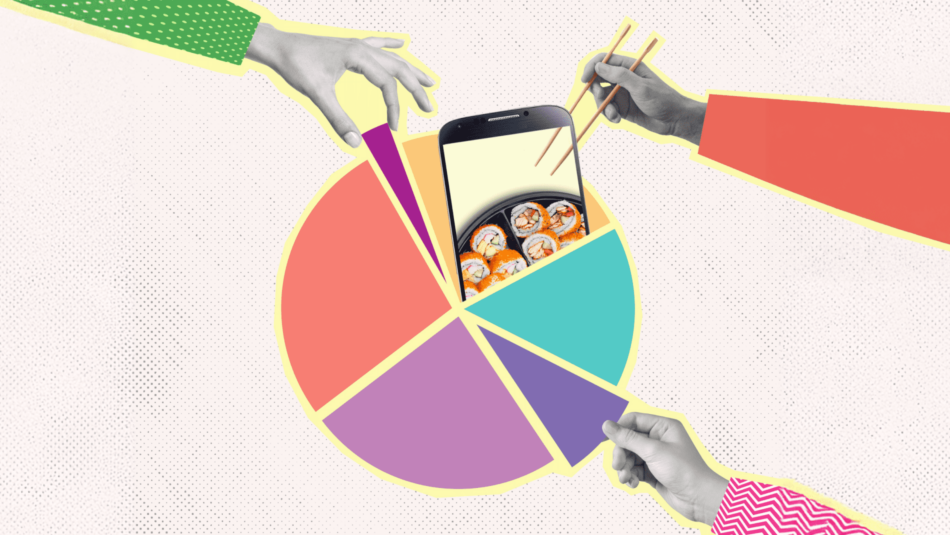
How Can CPG Food Brands Master Seasonal Price Fluctuations in Paid Social Advertising?
In the world of advertising for CPG food brands, the seasons bring more than just changes in weather. They usher in predictable fluctuations to the cost of capturing your audience’s attention via paid social media advertising.
As the cost of advertising rises and falls along with industry-wide and category-specific seasons, so too does the effectiveness of your ad spend. During peak periods, your brand will face higher costs, potentially reduced reach, and the ever-present risk of decreased engagement.
Here we explain what’s behind those seasonal shifts — and how to effectively plan for them moving forward.
Understanding CPM: The North Star Metric
The best way to track seasonal fluctuations in paid social media advertising is with key performance metrics that reveal broader market patterns. The single most important metric for this purpose is CPM (Cost Per Mille). Also known as “the cost of advertising,” CPM is simply the current cost of garnering 1000 impressions.
This standardized measurement allows companies to compare advertising efficiency across various channels over time, from social media to radio and television. It’s like having a common currency in a world of diverse advertising platforms.
But CPM tells you more than just the current dollar value of 1000 impressions. It can also reveal insights about:
- Ad performance and effectiveness
- Current market conditions, including seasonal changes
- Audience targeting precision
- Content freshness
- Competitive pressure
CPM is a bit like an early warning system, alerting you to potential issues before they become full-blown problems.
Decoding CPM Changes: What They Mean for Your Social Media Campaigns
As you track your paid social campaigns, you’ll notice that CPM isn’t static. It reflects the complex interplay of multiple factors affecting your campaign performance.
For instance, if your CPM is going up, it could mean:
- Your content is getting “stale” and losing its appeal after too much time in market
- Competition for your audience’s attention is heating up, possibly due to seasonal fluctuations
- You’re targeting a more expensive niche audience
A falling CPM, on the other hand, could indicate:
- Your ad creative is “fresh” and highly effective at capturing your audience’s attention
- You’re experiencing reduced competitive pressure due to seasonal fluctuations or other market factors
- A lower-cost audience profile that’s easier to penetrate
But before you draw a specific conclusion, remember: context is key.
The Importance of Change Logs
When it comes to accurately parsing CPM data, meticulous record-keeping is crucial.
Start by creating and maintaining detailed change logs for each campaign or channel. Your team should update the change log each time you make an adjustment to a particular campaign, whether that’s refreshing the creative, refining your target audience, or adjusting your level of investment.
Is it time to refresh your content? Should you adjust your targeting? Or is this simply a seasonal trend you need to ride out? A thorough change log allows you to pinpoint the precise cause of price fluctuations and answer those questions.
Don’t forget, a rising CPM isn’t always bad news. It could indicate you’re intentionally targeting a more valuable audience or that your ads are appearing in premium placements. The key is to correlate the price changes with your evolving strategy and other performance metrics to get the full picture.
Seasonal Patterns in CPG Advertising: A Year in Review
The annual cycle of CPG advertising follows relatively predictable patterns at the industry level, though specific timing varies by category.
January typically offers the lowest CPMs of the year, providing an opportunity for brands to extend their reach at a lower cost. Prices gradually increase through spring before entering a brief lull during the summer months. September brings higher costs as brands compete for a share of the back-to-school stock-up. And from there, it’s a race to the top as the holidays drive peak costs in November and December.
Let’s get a little more specific about what that looks like in terms of cost.
- The most expensive month for Facebook and Instagram ads is November, with an average of $8.80 CPM in 2023.
- The most expensive week of the year for Facebook and Instagram is the week of Thanksgiving and Black Friday — in 2023, that was ISO week 47, with an average CPM of $10.11. That was followed by Week 48, which in 2023 included Cyber Monday, with a CPM of $9.32, and Week 50 (December 11-17), with a CPM of $8.59.
- In 2024, we’ve already seen two weeks — ISO Week 21 ($8.74) and Week 36 ($8.61) — that were more expensive than any week in 2023 with the exception of peak weeks already mentioned above.
While the above patterns hold true across industries, keep in mind that these numbers will look different for CPG brands compared with other verticals. For instance, as of mid-November 2024, the CPM for CPGs is already hovering at $14.96, well above last year’s industry-agnostic average.
Category-Specific Seasonality: Not All CPGs Are Created Equal
Different CPG categories experience unique seasonal fluctuations based on their own specific market dynamics. For instance, the cost of advertising baking products will typically spike during the holiday season (perhaps riding higher than the industry average), while health products often dip during the holidays and surge in January. Frozen treats, meanwhile, are likely to face higher costs in the summer months while many other categories are experiencing a price dip.
It’s crucial that you understand your category’s unique patterns in addition to the broader seasonal trends outlined above. Doing so allows you to more accurately anticipate peaks and troughs, helping you plan your campaigns and budgets more effectively.
Keep in mind that these patterns aren’t set in stone. External factors — things like market conditions, competitive landscapes, and even global events — can cause unexpected shifts. Stay agile and keep a close eye on your metrics. This will help you adapt your media spend to unexpected changes and keep your campaigns on course.
Strategic Implications for Budget Planning
Understanding seasonal CPM trends helps you create more effective budget strategies throughout the year. This knowledge has a couple of practical applications.
- Align your strategy — and budget — with price hikes and dips. How you handle price fluctuations should depend on your underlying strategy. For instance, if your goal is to aggressively beat out the competition, you may decide to allocate the lion’s share of your budget to known high-cost periods to maintain or even increase your market share. On the other hand, if budget and market-share maintenance are your priorities, you could choose to keep your cost steady and ride out periodic dips in performance.
- Set stakeholder expectations. Seasonal patterns also provide valuable context for stakeholder communications. When presenting campaign performance data to executives, you can use seasonal trends to explain fluctuations in reach and engagement, even when spending remains constant. This helps set realistic expectations for campaign performance throughout the year.
Mastering Seasonal Shifts for Effective CPG Advertising
Paid social media advertising is one of the most powerful CPG marketing tools at your disposal. But you can’t achieve the highest possible ROI until you learn to anticipate and leverage seasonal CPM patterns.
Understanding both industry-wide and category-specific patterns enables you to transform predictable cost fluctuations into strategic opportunities. With careful planning and consistent monitoring, you can use these seasonal shifts to strengthen your market position and improve campaign effectiveness year-round.





